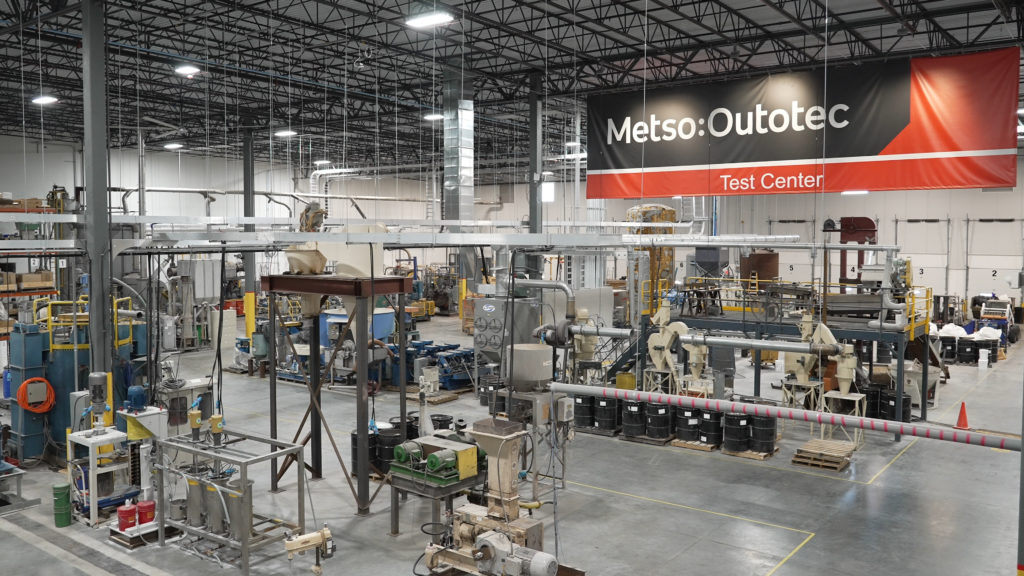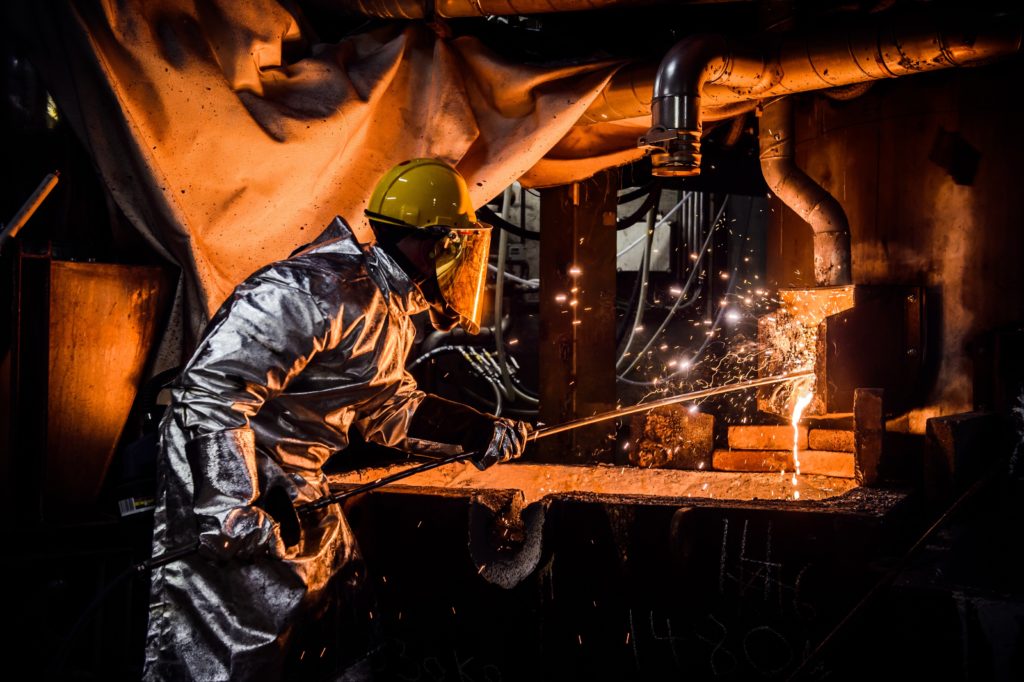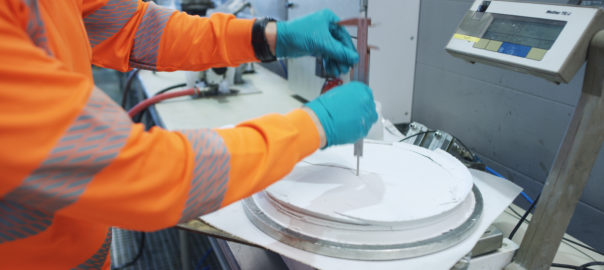The Metso Outotec global network of testing, research and product development facilities covers the whole process flowsheet from comminution through separation, to filtration, refining and pyrometallurgical/hydrometallurgical processing.
It has centres all over the globe – in Australia, Brazil, Chile, Germany, Finland, Peru, USA and more – able to, the company says, offer extensive expertise and circuit simulation to a wide range of industries.
Metso Outotec’s research and testing services include evaluation of ore types, mineralogical characterisation, feed material testing, sampling, materials selection, analytical chemistry and flowsheet development.
To get a flavour of this extensive research and testing portfolio, IM spoke to Alan Boylston, Director, Process Engineering at Metso Outotec, and Rodrigo Grau, Technology Director – Minerals Processing at Metso Outotec, about the capabilities of two of the company’s facilities – York (USA) and Pori (Finland), respectively, while also touching on Metso Outotec’s global testing and research capabilities.
In 2022, the company announced a consolidation of its minerals testing services in USA into a single 5,500 sq.m facility in York able to eventually cover the full minerals value chain and support the mining industry worldwide. Pori, meanwhile, focuses on mineral technology, hydrometallurgical processes development, pyrometallurgy and ferroalloys technology and material technology. In other words, the company conducts laboratory and pilot test work, flowsheet development as well as validation and development of new technologies for the industry.
IM: Will the York facility now be seen as your ‘testing centre of excellence’?
AB: The York facility is a centre of excellence for testing, but we have many of these within the company. Our global presence, the knowledge and our expertise at each of these locations is one of the factors that sets us apart.
Each of our locations is a centre for excellence in its own field. Pori, for example, has extensive research capabilities, Sorocaba in Brazil focuses on comminution and beneficiation testing, while Lappeenranta Dewatering Technology Center concentrates on thickening and filtration. Each location is an integral part of our global testing offering. In addition to these, we have various facilities around the globe covering also aggregates and pyrometallurgical testing, research and development.
That being said, the effort we have made to expand the York Test Center gives us a much better advantage for research and testing in North America, compared to a few years ago. We can now do more pilot-scale testing, especially with equipment like our HRC™800e high pressure grinding roll (HPGR). We can also carry out pyrometallurgical testing, plus conduct magnetic separation tests. At some point in 2023, we also expect to add thickening and filtration testing to this remit. But this is a very high-level view of what we have to offer in the York location.

IM: Even with this consolidation in USA, are you expecting to collaborate with other global facilities when it comes to testing processes throughout the flowsheet?
AB: Yes, absolutely. For example, we have a project coming in right now where the sample was first in Tampere (Finland) for some crushing test work, before they split off a sample for us for grinding test work in York and then Pori is also receiving a sample for some broader mineralogy testing.
This speaks to why we are able to claim to have global capabilities. No matter the testing or research need, we are able to assist our customers to get the job done. This all goes towards one goal – the customer’s benefit.
IM: How do you see these testing capabilities interacting and benefitting from other modelling work you carry out in-house? For example, do you anticipate using these facilities and the likes of the Geminex digital twin in unison to offer clients physical and digital representations of flowsheet options?
RG: Modelling is very important for us. In each project we work on, modelling and simulation are at the heart. Here in Pori, we carry out flowsheet development and technology validation. One of the outputs of our work is to end with a simulation of an industrial plant. Going from that simulation into Geminex is just one more step we will be taking in the future.
AB: At the York lab, we are now moving to a SCADA-based system to run everything: when a sample comes in, it gets tagged and identified and we then automatically know what test to run. We have tablets to, for instance, setup all the parameters of a test for an HRC 800e. We can start and stop the test on that tablet and see the real-time information coming in as the test is being carried out. That data is also being stored for future use.
We’re undergoing a program right now to build out a database function where all the post processing of this data goes on in the background and can then be seamlessly integrated into things like our HRC simulation software. We are building the backbone to carry out that real-time digital twinning.
IM: Do you anticipate your global testing capabilities to lead to a higher uptake of Planet Positive solutions?
AB: With our customers having a huge focus on sustainability, I do. As an example, since we have had the pilot-scale HRC 800e available for testing, it has been fully booked. In 2023, we are preparing for a test plan where we could take the HRC product and go directly into a pilot Vertimill. Those are two Planet Positive approaches we are putting together in a single test plant to show how far we can push energy efficiency and media consumption reduction.
RG: I would definitely agree with Alan. And to add to that – for example at Pori, we do a lot of hydrometallurgical testing and piloting, and that is only increasing with the rising demand for lithium and other battery minerals. And our customers are really looking at how our equipment is reducing their carbon footprint and other sustainability benefits.
You will hear us say it time and time again, but this is definitely a trend that we are seeing at all of our facilities.

IM: Will these expanded testing facilities also benefit your equipment and process R&D work?
AB: I think so. We built this lab to not just be a materials testing facility, but also a research hub, especially for grinding, but also for any other Metso Outotec business area needs. There is definitely a huge opportunity out there for us!
RG: And this rings true around the globe at all our facilities. For example, in separation, we have been testing the Concorde Cell™ flotation technology in Pori for a long time. And that is how we’ve approached development of a lot of our other innovations that go to market.
IM: How would you say industry testing requirements have changed over, say, the last five years?
AB: From our perspective, I am seeing more comprehensive test programs come through.
Instead of, say, one certain test, it is an entire test program with specific timings around evaluations and the ability to develop the flowsheet through the testing required. There is more collaborative designing of the flowsheet taking place through testing than there was five or 10 years ago.
RG: It is certainly more comprehensive now than it previously was.
For example, we carry out early engagement with our customers in Pori and start developing a flowsheet and evaluating the ore types.
The amount of material that is tested nowadays is much bigger than it was before. Obviously, it is not just limited to this example, because, as Alan mentioned before, we’ve got this connection between all our facilities to ensure our customers get exactly what they need from their testing program.
Also, our customers think about different drivers in the process very carefully and want that reflected in the test work. That could be more evaluation on the water they consume. They also look at the energy expended, on top of the expected recoveries and metal grades.
There is more emphasis on sustainability, even at these early stages, in addition to looking at how the ore types may change over time and what impact this will have on the processing requirements.
This is where our extensive simulation and modelling capabilities are leveraged for the biggest impact.
IM: Anything else to add?
RG: Pori and York are but a fraction of the expertise of the wider Metso Outotec research and testing portfolio; one that continues to expand in line with customer requirements. We don’t just cover mining, either – like our equipment offering, we provide research and testing services for the whole flowsheet.
And we are continually improving our capabilities in this space for our customers. So, stay tuned for the future and where we can take research and testing!







